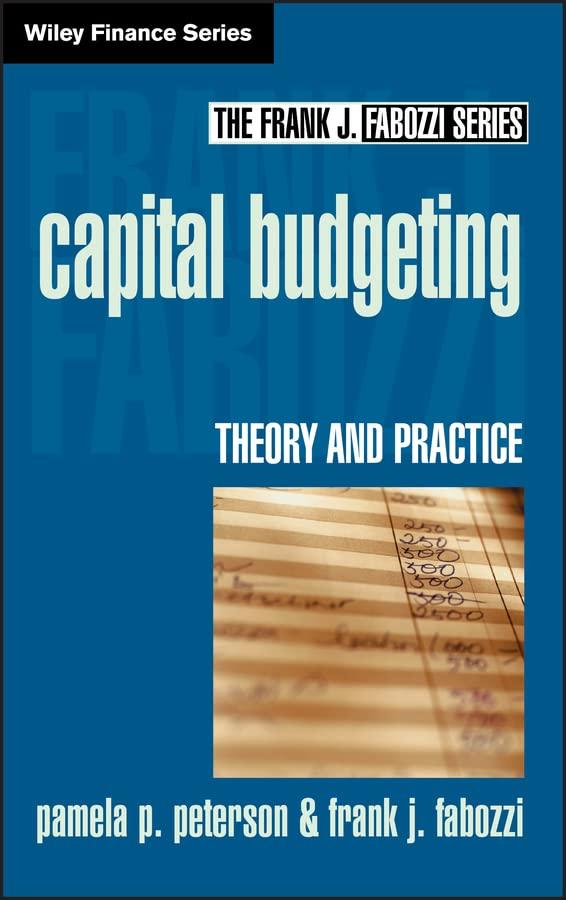Answered step by step
Verified Expert Solution
Question
1 Approved Answer
Solving a comprehensive problem) Use the end-of-year stock price data in the popup window, , to answer the folowing questich a. Compute the annual rates





Solving a comprehensive problem) Use the end-of-year stock price data in the popup window, , to answer the folowing questich a. Compute the annual rates of return for each time period and for both firms. c. Compute a three-year rate of return spanning the entire period (i.e., using the ending price for period 1 and ending price for period 4). e. How is the annual rate of return calculated in part d related to the geometric rate of return? When you are evaluating the performance of an investment that has been held for several years, what type of average rate of return (arithmetic or geometric) should you use? Why? . Enter the annual rate of return for each year for Harris in the table below. (Round to two decimal places.) Enter the annual rate of return for each year for Pinwheel in the table below. (Round to two decimal places.) Enter the annual rate of return for each year for Pinwheel in the table below. (Round to two decimal places.) b. The arithmetic average rate of return eamed by investing in Harris stock over this period is \%. (Round to two decimal places) The arithmetic average rale of return earned by investing in Pinwheel stock over this period is - (Round to two decimal places.) The geometric average rate of return earned by investing in Harris stock over this period is \%. (Round to two decimal places) The geometric average rate of return earned by investing in Pinwheel stock over this period is \%. (Round to two decimal places) c. The three-year rate of return spanning the entire period for Harris is \% (Round to two decimal places) c. The three-year rate of return spanning the entire period for Harris is \%. (Round to two decimal places.) The three-year rate of return spanning the entire period for Pinwheel is \%. (Round to two decimal places.) d. The annual rate of return converted from the three-year rate in part c for Harris is %. (Round to two decimal places.) The annual rate of return converted from the three-year rate in part c for Pinwheel is %. (Round to two decimal places) e. How is the annual rate of return calculated in part d related to the geometric rate of return? (Select the best choice below) A. The annual rate of return calculated in part d is not related to the geometric average rate of return B. The annual rate of return calculated in part d is nothing but the arithmetic average rate of retum calculated in a different way C. The annual rate of return calculated in part d is nothing but the geometric average rate of return calculated in a different way D. The annual rate of return calculated in part d is the same as the geometric rate of return in this problem but this is only a coincidence When you are evaluating the performance of an investment that has been held for several years, what type of average rate of retum (arithmetic or geometric) should you use? Why? (Select the best choice below.) D. The annual rate of return calculated in part d is the same as the geometric rate of return in this problem but this is only a coincidence When you are evaluating the performance of an investment that has been held for several years, what type of average rate of return (arithmetic or geometric) should you use? Why? (Select the best choice below.) A. The geometric rate of return should be used. It better describes the average annual rate of return over a period because it compounds at the same rate while the arithmetic rate of return is best used for a single period B. The arithmetic rate of return should be used. It better describes the average annual rate of refum over a period because it compounds at the same rate while the geometric rate of return is best used for a single period. C. Geometric average return beller describes the average annual rate of refurn over a period because it is a simple average so it answers the question concerming the expected rate of return over a period D. Arithmetic average return beller describes the average annual rate of return over a period because it is a simple average so it answers the question concerning the expected rate of return over a period
Step by Step Solution
There are 3 Steps involved in it
Step: 1

Get Instant Access to Expert-Tailored Solutions
See step-by-step solutions with expert insights and AI powered tools for academic success
Step: 2

Step: 3

Ace Your Homework with AI
Get the answers you need in no time with our AI-driven, step-by-step assistance
Get Started


